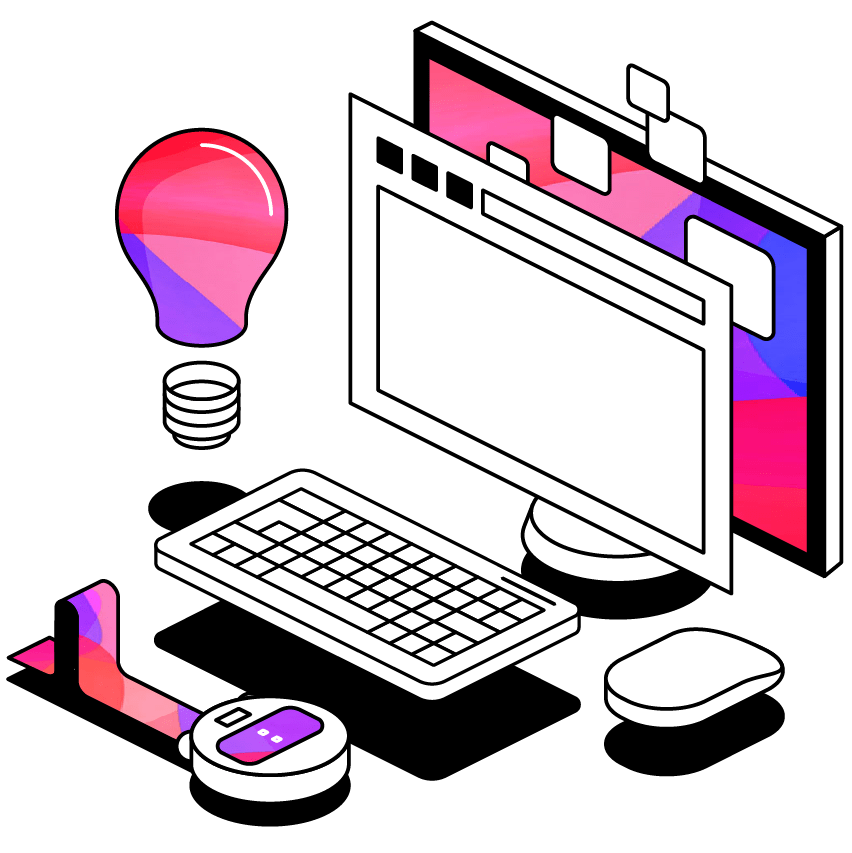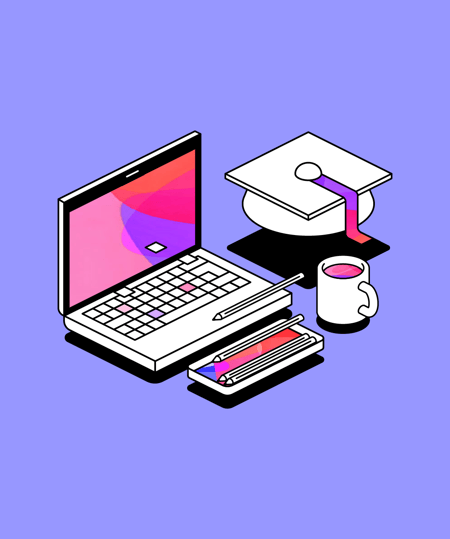Independent Learning & Disability
Independent Learning is a hugely important part of being a higher Ed student. What is it and what barriers do students with disabilities face in achieving it?
 4 min read
4 min read
 Published: 1 Apr 2019
Published: 1 Apr 2019
 Luke Garbutt
Luke Garbutt


Independent Learning is a hugely important part of being a higher ed student. So what exactly is it? And what barriers do students with disabilities face in achieving it?
Higher Ed: It’s all about independence
No matter what course you take or where you study, the higher ed experience has always been linked to independence.
It might be the first time you’ve lived away from home. It will probably be the first time you’ve had to organize your learning. And it could be the first time you’ve been responsible for getting the support you need. All of these ‘firsts’ demand self-reliance, self-advocacy and, underpinning it all, a sense of independence.
But what does that mean?
As much as we hear terms like ‘independent study’ or ‘student independence’, what they really mean often gets lost or confused. Yet it’s vital for institutions to encourage these skills, especially among students with disabilities.
We want to do our bit to keep these ideas in focus. So, let’s take a look at independent learning and what it means in practice.
Independent Learning
Independent learning is a skill that’s expected of students at higher ed level. A huge part of it is simply the ability to follow your own path through a course. Educators will no longer be giving you absolutely everything you need to excel – you’ll have to find a lot of material yourself, and will be to a certain degree responsible for your own learning.
A study commissioned by the UK’s Higher Education Academy analyzes best practice in encouraging independent learning. The authors discuss ‘Directed Independent Learning’, and how institutions can go about facilitating it.
‘Directed Independent Learning’ is:
‘understood as learning in which students are guided by curriculum content, pedagogy and assessment, and supported by staff and the learning environment, and in which students play an active role in their learning experience – either on their own, or in collaboration with others’.
How this works
Drawing on Principles of Good Practice for Undergraduate Education (Chickering & Gamson, 1987), Directed Independent Learning is manifested by:
- Encouraging contact between students and faculty
- Developing cooperation among students
- Encouraging active learning
- Giving prompt feedback
- Emphasizing time on task
- Communicating high expectations
- Respecting diverse talents and ways of learning
Why we like Directed Independent Learning
The scope of ‘Directed Independent Learning’ goes far beyond formal education. It’s about creating ‘lifelong learners’ who develop skills through higher ed that last long into adult life that become valuable in the workplace, in personal development and in a general spirit of inquiry or curiosity.
Ultimately, it’s about making higher education a life-changing experience.
The potential benefits, the HE Academy argues, are numerous:
- The ability to cover more ground and reach further than the minimum level of understanding of a topic
- It can create lifelong learners
- It creates a sense of belonging for students in the academic environment
- It motivates students by showing how what they’re learning impacts and relates to the real world
- The skills developed in independent learning are skills also useful for employment
- It’s easier to monitor student engagement
- Practical benefits such as flexibility
The Problem
The reality is that many students don’t have immediate access to this kind of learning independence. Barriers that a disability or mental illness place in front of learning can be difficult for some students to hurdle without the right support.
But it’s also true that there are measures institutions, faculty and students can take to make higher ed the experience it could be for all.
First, let’s look at some general barriers students face with independence in the classroom. Then, we’ll lay out some of the common issues affecting students with disabilities.
Overly prescriptive teaching: Directed independent learning emphasizes how important the role of educator as ‘facilitator’ rather than ‘teacher’ is for creating the conditions for independence. Classrooms should be less about ‘traditional knowledge transmission’ and more about facilitating different kinds of engagement with course content and the learning process, like enquiry-based learning, peer learning and problem-based learning.
A lack of study skills instruction: Lectures are less valuable without a good set of notes. But how often do institutions or schools actually teach a skill like note taking? It’s worth thinking about, because students are expected to have a certain level of proficiency with it. Without the necessary instruction in good study habits and skills, students could be at risk of alienation and disengagement. It is, however, worth mentioning that many student success and academic support departments are doing a great job of providing this instruction. Often, they just need better publicity and support in their efforts.
Accommodations: Staying with note taking, a traditional way of accommodating students with a disability that have problems with this skill is to assign them a peer note taker, who will give a complete set of notes to the student in question. This threatens independence by making students reliant on others, and could harm engagement by depriving students of a learning process that makes lectures valuable. A widely adopted solution is to introduce assistive technology
These are a few examples of where institutions or educators can improve student independence. But what about the specific obstacles students with disabilities face in the classroom?
A different ballgame
As we’ve visualized in a previous post, students with disabilities have lower rates of completion than students without. In fact, in 4-year colleges, graduation rates are at a mere 34%. That’s why we believe it’s imperative for institutions to be fully aware of the obstacles these students routinely face.
We have separate articles on students living with common disabilities like autism, dyslexia, ADHD/ADD and physical impairments, as well as how depression and anxiety affect learning.
Here we’ll list some of the more common barriers students with conditions like these might be experiencing:
- Engagement
A problem central to understanding disabilities among higher ed students is classroom engagement. A disengaged student is less likely to build the skills necessary to achieve learning independence, and is more likely to experience problems progressing through their studies. Unless properly addressed, students with disabilities might be experiencing the following barriers to engagement:
- Impaired Motor Functions:
If a condition causes impairment of motor functions, the process of writing, reading and other traditional study activities can be hampered. Without an adequate solution, students could face real accessibility issues
- Sensory Issues:
Sensory overload in the classroom can affect the concentration of students with ADHD, Autism, Anxiety and other conditions, while sensory impairment comes with its own set of potential problems.
- Working Memory:
Those with learning disabilities may experience deficiencies in working memory. This could present problems with retaining information in the classroom, taking notes and recall of course content, among other potential issues.
- Cognitive Impairment:
Issues with verbal communication, attention, mental processing and other signs of cognitive impairment create significant obstacles at higher ed, and require special attention in the classroom.
Written by Luke Garbutt

More from Disability Services
View All
 4 min read
4 min read
Working with faculty: 6 common questions for implementing Glean in higher education
To help facilitate conversations with faculty members and allay any concerns around introducing Glean to your institution, we’ve curated six common topics of discussion alongside responses to maximise positive outcomes.

 2 min read
2 min read
Access All Areas: How Anoka-Ramsey Community College use Glean
Disability and Accessibility Specialist Heather Dibblee is dedicated to advocating for the rights of underrepresented students who may feel unheard. In part two of our Q&A series we explore how Glean is used within her institution.

 3 min read
3 min read
Higher Education and Disability: an interview with Joseph Madaus & Lyman Dukes III
Gleanster, Mais Wilsher, recently sat down with Joseph Madaus and Lyman Dukes III, Professors at the University of Connecticut and the University of South Florida to discuss their latest research publication, Higher Education & Disability.





